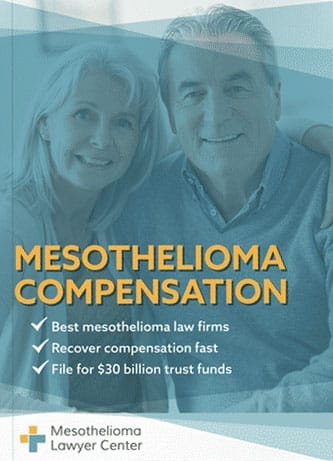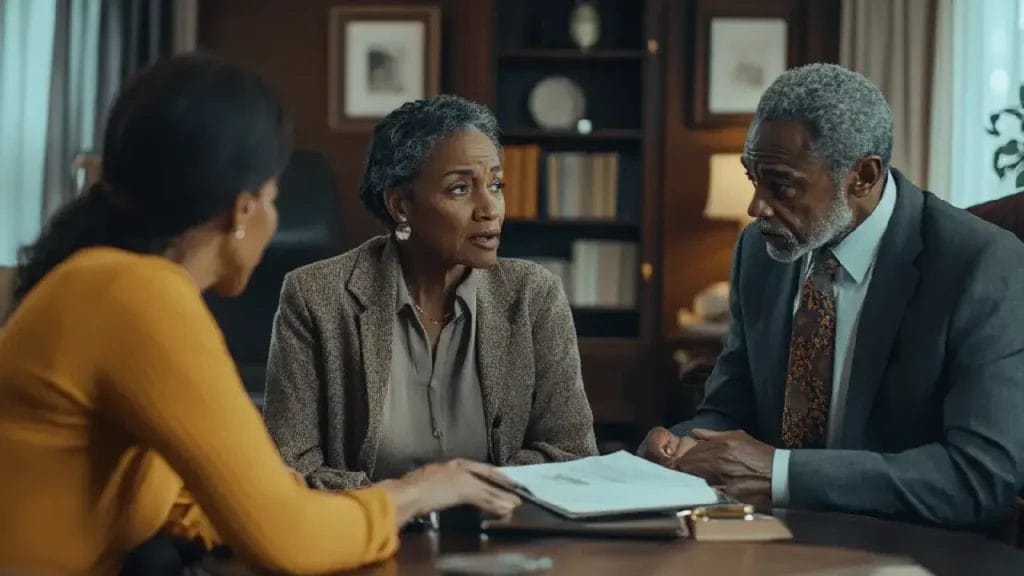Contact a Libby mesothelioma lawyer for legal advice if you’ve been diagnosed with mesothelioma or have questions about your rights. Libby was home to W.R. Grace vermiculite mines that operated for years. The mine also contained asbestos and poisoned area residents and workers in vermiculite facilities nationwide.
If you or someone you love suffers from mesothelioma, asbestos-related lung cancer, or asbestosis, you may qualify for significant compensation. Fill out our form to get a free Financial Compensation Packet. You’ll learn about the experienced mesothelioma lawyers in Libby, how to get paid in 90 days, how to file a claim for the asbestos trust funds, and more.


FREE Financial Compensation Packet
- Info on law firms that will recover your HIGHEST COMPENSATION
- Learn how to get paid in 90 days
- File for your share of $30 billion in trust funds
Libby Asbestos Facts
- With a sparse population, the number of deaths related to asbestos in Montana is small, just over 1,500 from 1999 to 2017.
- Lincoln County, home of Libby, had the highest number of deaths in that period, with 262.
- The W.R. Grace mines in Libby are part of one of the worst man-made environmental disasters in the U.S.
- The contaminated vermiculite is estimated to be responsible for at least 400 deaths and illnesses in more than 2.400 people.
When Do I Need a Libby Mesothelioma Lawyer?
If you were exposed to asbestos in Libby, and especially if you have already been diagnosed with an asbestos disease, you need a top Montana mesothelioma lawyer.
Because of the special circumstances of the Libby asbestos disaster, legal options for victims are a little different. W.R. Grace, the company responsible for asbestos exposure in Libby residents, went bankrupt.
Victims cannot sue W.R. Grace. However, as part of bankruptcy, the company set up an asbestos trust fund and funded it with $4 billion.
An experienced asbestos attorney in Libby, Montana, can help you make a successful claim with the trust fund. They can also explain any other legal options you might have.
Libby, Montana, and the Asbestos Disaster

Mining has long been an important industry in Montana. The story of vermiculite mining in and around Libby began in earnest in the 19th century, but it was in 1919 that E.N. Alley purchased the Rainy Creek mining claims and launched the Zonolite Company. By the early 1900s, the industry was booming.
The Zonolite vermiculite mines comprised the biggest share of the operation in the region. In 1963, Maryland-based W.R. Grace & Company acquired Alley’s Zonolite business, marking a new era in the mine’s history. At its peak period of operations in the middle of the 20th century, the Libby mine produced two million tons of vermiculite mineral per year. The company shipped the vermiculite to processing plants around the country.
As workers, residents, and the government later learned, the vermiculite was contaminated with asbestos. Libby’s mines may have produced around 80 percent of the world’s vermiculite supply. Mine activities released about 5,000 pounds of asbestos into the air until W.R. Grace ceased operations in Libby in 1990, bringing an end to over 70 years of mining in the area.
This timeline highlights how the industry evolved from its early days to becoming a significant player in the global market, leaving a lasting impact on both the region and the world.
Health Impacts of Asbestos Exposure in Libby, Montana
The town of Libby, Montana, and its neighboring community, Troy, faced devastating health consequences due to asbestos exposure from local mining activities that spanned several decades.
Toll on Human Lives
The asbestos-contaminated mines have led to the deaths of hundreds of residents. The exposure was particularly severe among those directly involved in mining operations. These workers, alongside town residents, faced toxic conditions, leading to numerous respiratory illnesses and related diseases that have claimed many lives.
Medical Findings and Statistics
A study published in 2021 highlighted the grim reality for Libby’s population. It revealed that an estimated 15-fold increase in the risk of developing mesothelioma, a type of cancer commonly linked to asbestos exposure, was evident among mine workers. In total, about 694 residents are believed to have died from diseases directly associated with asbestos exposure.
Current Health Status
Today, approximately 10% of Libby’s residents live with illnesses tied to asbestos. Since the contamination’s onset, around 2,400 individuals have been diagnosed with such diseases, showcasing the long-term impact on the community’s health.
Libby’s story serves as a harsh reminder of the severe health risks posed by asbestos exposure, affecting generations of workers and their families in the region.
What Kind of Asbestos Was in Libby, Montana?
Known as Libby Amphibole asbestos, or LA, the asbestos released in Libby was particularly dangerous. Asbestos is a harmful substance because it sheds fibers that can be inhaled or ingested. Fibers inside the body cause tissue and cell damage, leading to illness in some people.
Friable is especially dangerous because it sheds fibers very easily. Libby Amphibole is highly friable asbestos. Any asbestos would have harmed people in the years that W.R. Grace exposed people to it, but LA was more harmful than other types.
Libby Asbestos Superfund Sites
The U.S. Environmental Protection Agency (EPA) designated Libby as a Superfund site. Since 2002, the EPA has been conducting a massive cleanup effort. According to the agency, the amount of asbestos in downtown Libby is now nearly 100,000 times lower than when the mine was operating, and today, Libby is considered safe by the EPA.
However, the journey to safety has been complex. Between 1,200 and 1,400 Libby properties still show signs of asbestos contamination. Thousands of people in Libby and cities with vermiculite processing plants have been exposed and gotten sick from asbestos. The death toll related to Libby vermiculite is expected to continue rising.
This reduction in asbestos levels marks a significant improvement, but the impact of past contamination continues to affect the community. The EPA’s cleanup efforts are ongoing, working to address and remediate the remaining contaminated properties, aiming to protect residents’ health and well-being in the long term.
In Libby, at least 1 in 10 residents currently suffers from an asbestos-related illness. This startling statistic highlights the widespread impact of the contamination. Since the issue began, approximately 2,400 individuals have been diagnosed with diseases linked to asbestos exposure. This number underscores the significant health crisis facing the community, with the situation only expected to worsen over time.
While the problem extends beyond Libby, the town remains a central point of concern due to the severity of the impact on its residents. Asbestos exposure continues to pose a severe threat, and efforts to address the health concerns are critical.
Superfund Cleanup Efforts
The EPA has spent hundreds of millions of dollars cleaning up the Libby site. The closed mining facilities have been cleaned of asbestos.
However, the operations by both Zonolite and its corporate owner W.R. Grace went on for so long that even the wood chips in nearby logging mills were contaminated.
Progress is being made, with another site delisting in early 2020. In 2021, the EPA deleted another part of the site from the Superfund list.
The EPA will also soon be handing over control of the site to state and county government agencies.
Compensation for Libby, Montana, Asbestos Victims

The situation in Libby is unique, as it involves so many people, one company, and the government. Libby, Montana, and nationwide asbestos firms have worked hard to get victims the compensation they deserve following this disaster.
“While W.R. Grace went bankrupt, lawyers could still hold the state of Montana and its insurer liable for victims’ medical expenses. More than 1,300 plaintiffs in the case were awarded $43 million. Their lawyers showed that the state could have done more to warn workers and residents of the risks at the Libby mine. Lawyers and victims have also been successful in holding BNSF Railway Company liable. The company tried to dodge liability, but the Montana Supreme Court ruled it was not shielded. It is accused of spreading asbestos dust and contaminating soil in the rail yard. Some victims and their lawyers have even been able to hold W.R. Grace’s insurer liable for damages despite the company’s bankruptcy.
In 2022, an Oregon jury awarded a former W.R. Grace employee with asbestosis $36.5 million. The jury determined that W.R. Grace’s bankruptcy did not protect the insurer. The insurer had a separate responsibility to warn workers at the mine about asbestos.
Beyond these notable victories, numerous legal actions have unfolded over the years, reflecting the scope of the crisis:
- Ralph Hutt’s Case: In February 2022, a Montana jury ordered Maryland Casualty Company to pay $35.5 million to Ralph Hutt, an employee who developed asbestosis after working at the Libby mine for just 18 months in the late 1960s. This case set a precedent for more than 900 similar lawsuits against the company.
- Major Settlements: A significant group payout occurred in January 2017, where over 1,000 Libby victims were awarded a $25 million settlement. This resolved more than 100 individual lawsuits against Montana state agencies for failing to warn residents about the mine’s dangers.
- Historical Context: Between 2000 and 2009, around 800 Libby residents filed claims against W.R. Grace during its bankruptcy proceedings. Before filing for bankruptcy, Grace faced lawsuits from approximately 150 Libby residents, many of which were settled privately.
Despite these legal battles, Montana agencies maintain that they had no legal obligation to warn the public about the mine’s dangers. However, the U.S. Environmental Protection Agency now considers Libby to be safe, with asbestos levels in downtown Libby nearly 100,000 times lower than when the mine was operational.”
The Center for Asbestos Related Disease in Libby
Libby residents affected by asbestos can get treatment at top-notch facilities throughout Montana. Because of the scope of the disaster, residents can also reach out to a local facility for cancer screenings and information about prevention and treatment.
The Center for Asbestos Related Disease (CARD) is funded by the Agency for Toxic Substances and Disease Registry and the Centers for Disease Control and Prevention. Contact CARD if you have questions about screenings, treatment, and access to mesothelioma specialists.
This firm was extremely professional and responsive. If you have any meso questions, I’d highly recommend them
– Michael L.
Getting Legal Assistance in Libby
Remember, if you’ve been diagnosed with mesothelioma, asbestos-related lung cancer, or asbestosis, you may qualify for significant compensation. Get our free Financial Compensation Packet for information on the top mesothelioma and asbestos lawyers in your area. For questions and assistance, feel free to contact us at 800-793-4540.

Paul Danziger
Reviewer and EditorPaul Danziger grew up in Houston, Texas and earned a law degree from Northwestern University School of Law in Chicago. For over 25 years years he has focused on representing mesothelioma cancer victims and others hurt by asbestos exposure. Paul and his law firm have represented thousands of people diagnosed with mesothelioma, asbestosis, and lung cancer, recovering significant compensation for injured clients. Every client is extremely important to Paul and he will take every call from clients who want to speak with him. Paul and his law firm handle mesothelioma cases throughout the United States.
References
- U.S. Environmental Protection Agency. (n.d.). Superfund Site: Libby Asbestos Site Libby, MT
Retrieved from: https://cumulis.epa.gov/supercpad/CurSites/csitinfo.cfm?id=0801744&msspp=med - Scott, T. (2012, November 19). EPA, Contractors Look at Ways to Log Libby’s Asbestos-Laden Forest. Missoulian.
Retrieved from: http://missoulian.com/news/local/epa-contractors-look-at-ways-to-log-libby-s-asbestos/article_34f09908-313d-11e2-9b7f-0019bb2963f4.html - Davidson, M. (2019, May 22). Libby Residents Question State’s Investment in W.R. Grace. NBC Montana.
Retrieved from: https://nbcmontana.com/news/local/libby-residents-question-states-investment-in-wr-grace - Environmental Working Group. (n.d.). Asbestos-Related Deaths in Montana.
Retrieved from: http://www.asbestosnation.org/facts/asbestos-deaths/mt/ - Boton, A. (2020, January 28). Another Libby Asbestos Site is Ready for Delisting, EPA Says. Montana Public Radio.
Retrieved from: https://www.mtpr.org/post/another-libby-asbestos-site-ready-delisting-epa-says - Scott, T. (2021, September 28). EPA Deletes Portion of Superfund Site from National Priorities List. Flathead Beacon.
Retrieved from: https://flatheadbeacon.com/2021/09/28/epa-deletes-portion-of-superfund-site-from-national-priorities-list/ - Bloomberg Law. (2011, September 20). Montana Judge Approves $43 Million Settlement for Libby Asbestos Victims.
Retrieved from: https://news.bloomberglaw.com/environment-and-energy/montana-judge-approves-43-million-settlement-for-libby-asbestos-victims - Scott, T. (2020, March 13). Montana Supreme Court: BNSF Not Shielded from Liability in Libby Asbestos Cases. Flathead Beacon.
Retrieved from: https://flatheadbeacon.com/2020/03/13/montana-supreme-court-bnsf-not-shielded-liability-libby-asbestos-cases/ - Ehrlick, D. (2022, February 19). Libby Asbestos Worker Wins Historic $36.5M Award from Cascade County Jury. Great Falls Tribune.
Retrieved from: https://www.greatfallstribune.com/story/news/2022/02/19/libby-montana-asbestos-worker-wins-36-5m-award-from-cascade-county-jury/63432974007/ - Center for Asbestos Related Disease. (n.d.). About CARD.
Retrieved from: https://libbyasbestos.org/about/
